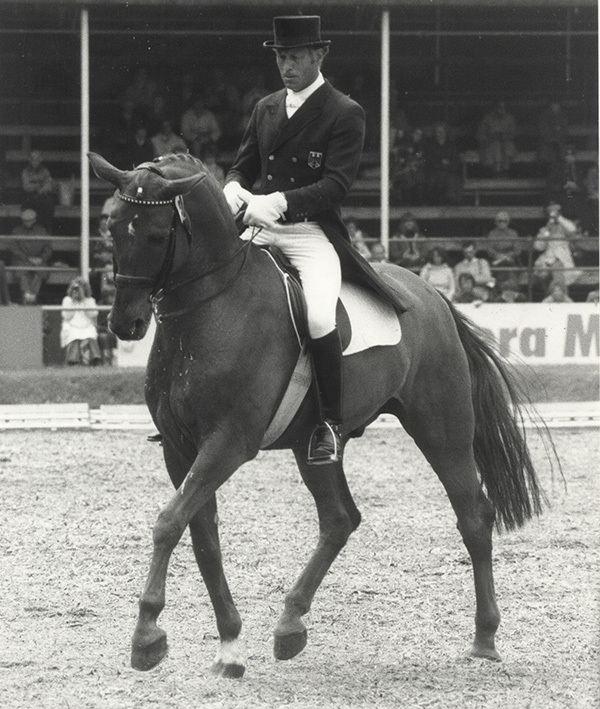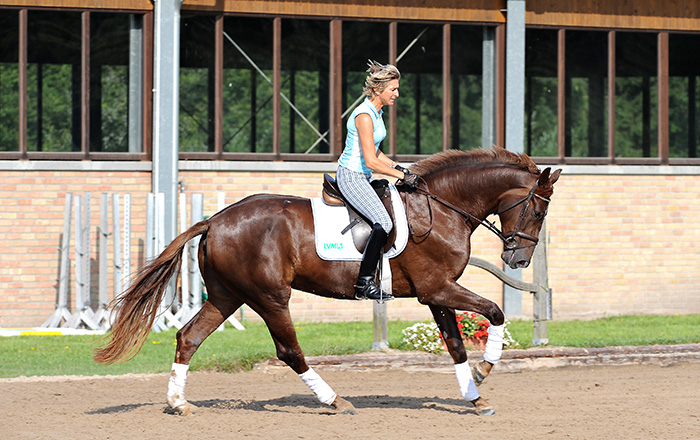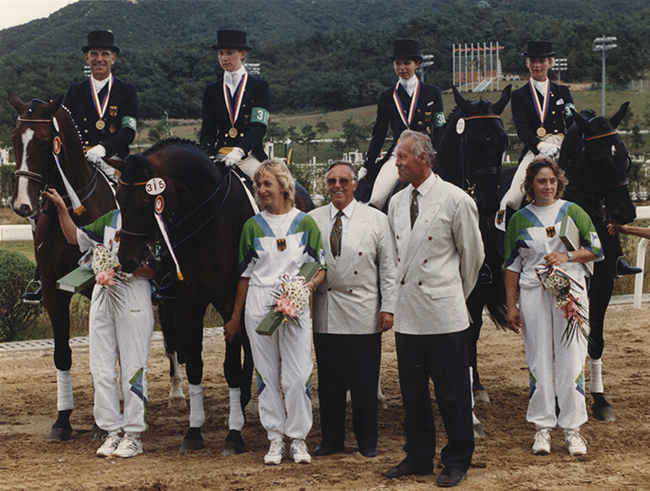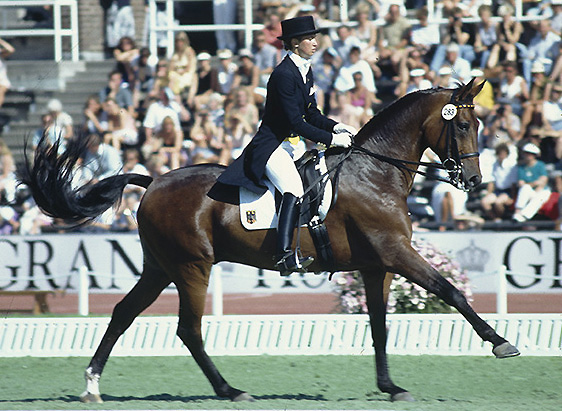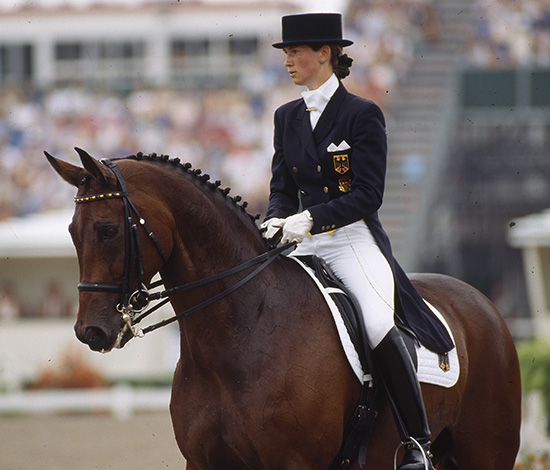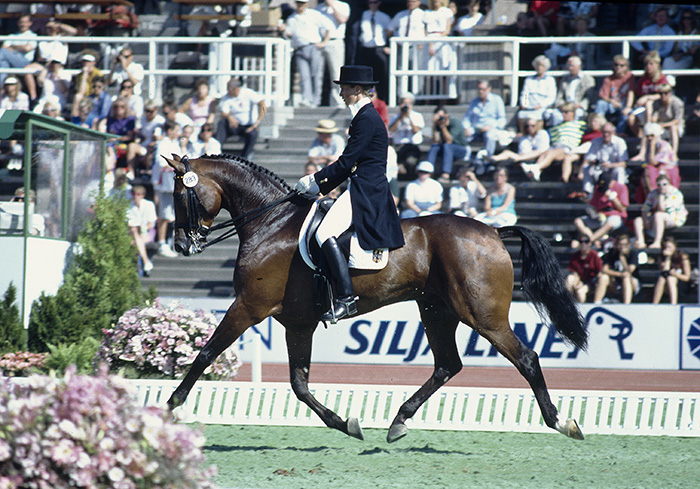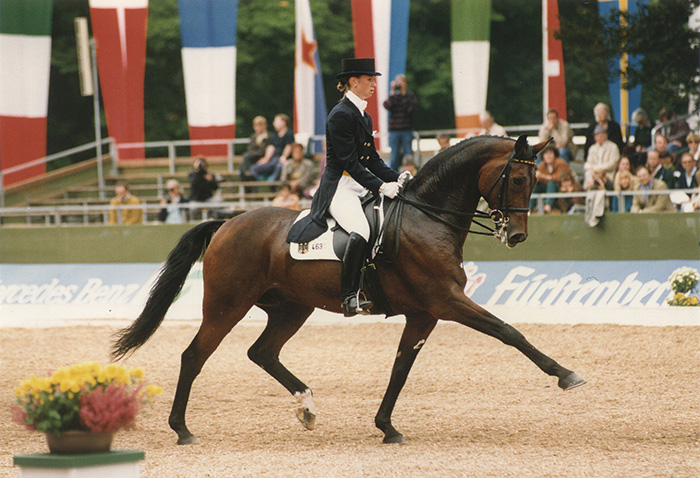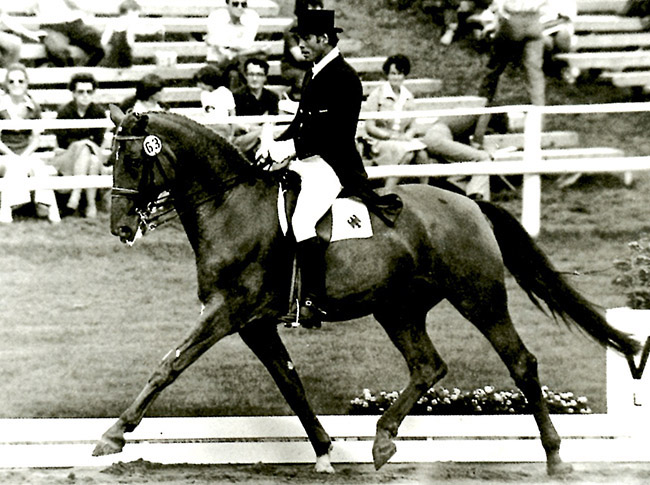From the archives
Harry Boldt and one of his many medal winners, Woycek
Harry Boldt was perhaps the most successful dressage trainer of modern times. His teams were virtually unbeatable, his methods? The German Training Scale pure and simple. No gimmicks, nothing new – just the principles, but applied with the eye of a true horseman…
Can a horse go too long, too low? ‘
“The horse must be a little bit closed. Not so his head is down and his hindlegs are trailing out behind him. It is important that the neck is round, not only long, but also round. You must always form the horse’s neck. If you ride a horse always in a high position, then the neck will not be nice, it will be stiff like wood.”
First you must work your horse long and down, canter and trot, transitions. When you feel everything is alright, when you can bend him left and right and see he follows your hand, this is the moment when I start to teach collection and higher collection, we can start the lesson (training the exercise).”
Gold in Seoul for Harry and the team of Reiner Klimke, Nicole Uphoff, current German coach Monica Theodorescu and Ann-Kathrin Linsenhoff – Werner Ernst image
In photos it seems that the reins on Rembrandt are sometimes almost loose. Is this deliberate?
“The horse carries himself very well, and that allows the rider to sit with very light reins. We do not want hanging reins, but a little bit of softness and lightness- that is what the judges like to see.”
And yet Rembrandt is worked a great deal very long, and low?
“Rembrandt can be very strong with his back. If you saw Nicole Uphoff working Rembrandt in the days before the competition in Seoul, it was always down with his head to loosen his back, with his head down to the ground – trot, medium and collected canter.”
“When the horse is totally on the forehand you need to bring him up. When his back is not soft enough you need to keep him round. When the back is hanging, and the horse is not working with the back, the horse needs to reach down and be soft. You can see the result. At the end bring him in balance and you score a nine. That is basic riding.”
“When the horse is young you should be thinking that you want that the horse is seeking your hands, that he is not against, not behind, but seeking your hands, your reins. All half-halts really are coming through the neck and back and the hindlegs.
“Ride every new exercise with the half-halts first. On the short side before the half-pass or a shoulder-in. Coming into the corner, half-halt, flexion, then let the horse go. You need rein aids in the shoulder-in – the horse must be ready for the shoulder-in. Coming around the corner to the long side, the rein aids have more flexion. Before you start the shoulder-in the horse must be really soft, so that it can move left, right, and through the poll.”
Here’s some observations and comments from Harry to riders in a working session:
“Bring him down in front first, so he works with his back. It is too early to bring his head into a ‘normal’ position.”
Another message Harry had when he was instructing: “Less curb more snaffle.” It was a refrain the riders heard, not just in the warm up, but as often as the work demanded of riders at higher levels of collection. It was lovely to see curb bits at right angles to the ground, instead of parallel to the ground like they were at the beginning of the session.
But before you get the idea that this was a return to working for years in the long low outline and never attempting the higher movements, Harry’s twenty-minute warm up period was a prelude for a superb working session that included all the movements of the Grand Prix, and the school ended with some breath-taking passage.
The message – first long and low, first truly round, then work work work on improving every tiny aspect of the work. At one stage one rider completed nine absolutely perfect one times changes then came to halt, only to be reminded ‘the off hind, square the off hind’.
What made Woycek such a good horse?
“First his temperament. He was for a dressage horse of the best temperament. When you asked him to work, he worked and gave his best. He was so relaxed when you walked with him through the fields in the days after a horse show, the next week at a horse show, or training, he works again. He was better in the arena at competition than he was at home. He had a very good walk, very good extended trot, good canter. He could do piaffe, passage, pirouettes. It was not a problem for this horse.”



